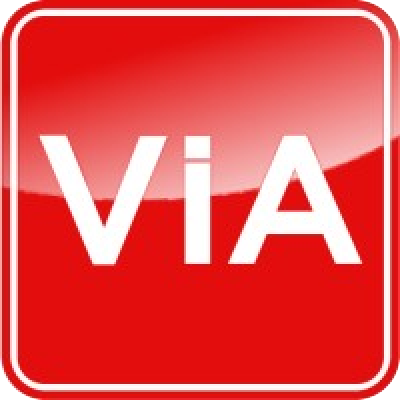Understanding Financial Health of a Company
In dissecting a business to check its “health”, we make use of the 3 Financial Statements:
- Balance Sheet
- Income Statement
- Cash Flow
In this post, we will look into the balance sheet:
The Balance Sheet
The Balance Sheet is a financial statement that summarizes a company’s assets, liabilities and shareholders’ equity at a specific point in time. These three balance sheet segments give investors an idea as to what the company owns and owes, as well as the amount invested by the shareholders.
The balance sheet must follow the following formula:
Assets = Liabilities + Shareholders’ Equity
This means that assets, or the means used to operate the company, are balanced by a company’s financial obligations along with the equity investment brought into the company and its retained earnings.
Assets are what a company uses to operate its business, while its liabilities and equity are two sources that support these assets. Owners’ equity, referred to as shareholders’ equity in a publicly traded company, is the amount of money initially invested into the company plus any retained earnings, and it represents a source of funding for the business.
It is important to note that a balance sheet is a snapshot of the company’s financial position at a single point in time. It can be used to calculate how much a company is worth at that point of time.
Click HERE to book a Free Investing Workshop.
Types of Assets
Current Assets
Current assets have a life span of one year or less, meaning they can be converted easily into cash. Such assets classes include cash and cash equivalents, accounts receivable and inventory.
Cash, the most fundamental of current assets, also includes non-restricted bank accounts and checks. Cash equivalents are very safe assets that can be readily converted into cash; bonds are one such example.
Accounts receivables consist of the short-term obligations owed to the company by its clients. Companies often sell products or services to customers on credit; these obligations are held in the current assets account until they are paid off by the clients.
Lastly, inventory represents the raw materials, work-in-progress goods and the company’s finished goods. Depending on the company, the exact makeup of the inventory account will differ. For example, a manufacturing firm will carry a large amount of raw materials, while a retail firm caries none. The makeup of a retailer’s inventory typically consists of goods purchased from manufacturers and wholesalers.
Non-Current Assets
Non-current assets are assets that are not turned into cash easily, and are expected to have a life-span of more than a year.
They can refer to tangible assets such as machinery, computers, buildings and land.
Non-current assets also can be intangible assets, such as goodwill, patents or copyright. While these assets are not physical in nature, they are often the resources that can make or break a company – the value of a brand name, for instance, should not be underestimated.
Depreciation is calculated and deducted from most of these assets, which represents the economic cost of the asset over its useful life.
Types of Liabilities
On the other side of the balance sheet are the liabilities. These are the financial obligations a company owes. Like assets, they can be both current and long-term.
Long-term liabilities are debts and other non-debt financial obligations, which are due after at least one year from the date of the balance sheet.
Current liabilities are the company’s liabilities which must be paid within one year. This is includes both shorter term borrowings, such as accounts payables, along with the current portion of longer term borrowing, such as the latest interest payment on a loan.
Shareholders’ Equity
Shareholders’ equity is the initial amount of money invested into a business. If, at the end of the fiscal year, a company decides to reinvest its net earnings into the company (after taxes), these retained earnings will be transferred from the income statement onto the balance sheet into the shareholder’s equity account. This account represents a company’s total net worth. In order for the balance sheet to balance, total assets on one side have to equal total liabilities plus shareholders’ equity on the other.
Below is an example of how a Balance Sheet looks like:
Balance Sheet Of ABC Company
| Cash and Short Term Investments
Cash & Equivalents 2,291.1 Short Term Investments 1,164.0 Accounts Receivable – Trade, Gross 2,994.7 Provision for Doubtful Accounts (110.8) Total Receivables, Net 2,883.9
Total Inventory 2,357.0 Prepaid Expenses 765.6 Other Current Assets, Total 272.4 Total Current Assets 9,734.0 Property/Plant/Equipment 1,957.7 Goodwill, Net 193.5 Intangibles, Net 467.4 Long Term Investments 0.0 Note Receivable – Long Term 0.0 Other Long Term Assets, Total 897.0 Other Assets, Total 0.0 Total Assets 13,249.6
|
Liabilities and Shareholders’ Equity
Accounts Payable 1,031.9 Payable/Accrued 0.0 Accrued Expenses 1,035.6 Notes Payable/Short Term Debt 411.8 Capital Leases 32.0 Other Current Liabilities 765.7 Total Current Liabilities 3,277.0 Total Long Term Debt 437.2 Deferred Income Tax 842.0 Minority Interest 0.0 Other Liabilities 0.0 Total Liabilities 4,556.2 Redeemable Preferred Stock 0.3 Preferred Stock – Non Redeemable 0.0 Common Stock 2.8 Additional Paid-In Capital 2,871.4 Retained Earnings 5,451.4 Other Equity 367.5 Total Equity 8,693.4 Total Liabilities & Shareholders’ Equity 13,249.6 Total Common Shares Outstanding 485.5 Total Preferred Shares Outstanding 0.0
|
Click HERE to book a Free Investing Workshop.
Mind Kinesis Research Team
Investment in Stocks Blog
Value Investing Academy – the Warren Buffet Way
https://www.investment-in-stocks.com

